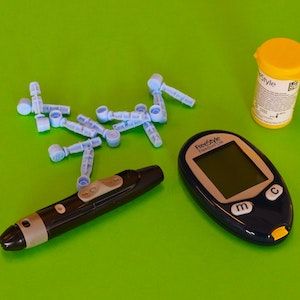Article
Progression of Gestational Diabetes to T2D Linked to Increased Glucose Level
Author(s):
Data show risk factors included education level and increased glucose level did not have signficant impact on BMI and body fat of children.

A worldwide analysis conducted by the International Diabetes Federation in 2019 found 20 million live births were affected by hyperglycemia in pregnancy, with 86.3% of these women affected by gestational diabetes mellitus (GDM).
A recent study explored risk factors for progression to type 2 diabetes (T2D) in women with GDM, as well as long-term impact of GDM on their children’s health.
Investigators, led by Chich-Hsiu Hung, PhD, RN Professor, School of Nursing, Kaohsiung Medical University, found risk factors included education level, 1-h blood glucose level for the antepartum 100-g oral glucose tolerance test and 2-h blood glucose level for the postpartum 75-g oral glucose tolerance test.
They also found blood glucose and biochemical values of women with GDM remained abnormal for several years postpartum.
Study
The team performed a non-concurrent cohort and case-control study designs, with guidelines chosen for the study from the Strengthening the Reporting of Observational studies in Epidemiology (STROBE).
Recruitment of women diagnosed with GDM took place between 1995 - 2011 at 2 teaching hospitals in Southern Taiwan.
Medical records showed investigators details of the women’s 21-year obstetric history (1995 - 2016), including the physiological indicators during pregnancy, pregnancy outcomes, and postpartum blood glucose values.
The team also collected follow-up data from November 2012 - February 2016, with women and children invited to participate in the “Women with GDM” research activity.
Investigators collected data on family health history, blood tests for various biochemical indicators and physiological measures, including body height, weight, BMI, body fat, waist circumference, systolic blood pressure (SBP) and diastolic blood pressure (DBP).
Inclusion criteria included all women diagnosed with GDM during antenatal check-ups between 1995 - 2011 and childbirth at a teaching hospital in Taiwan.
Blood tests were performed to determine fasting blood glucose, insulin, glycated hemoglobin (HbA), triglyceride (TG), total cholesterol (TC), HDL-C, LDL-C, and body fat levels followed by a 75-g OGTT.
Investigators noted women were asked to provide demographic characteristics and obstetric history following the blood test.
They also noted that the women were divided according to blood glucose levels into either normoglycemic (HbA1c <6.5%) and diabetic (HbA1c ≥6.5%) groups.
The aim was to examine antepartum, postpartum, and combined antepartum-postpartum risk factors for developing T2D from GDM and long-term impact and outcomes of GDM on their children.
Investigators performed logistic regression analysis to explore the antepartum, postpartum, and combined antepartum–postpartum predictors for developing type 2 diabetes in women with GDM.
Results
A total of 296 women with gestational hyperglycemia were enrolled in the study and after exclusions, 226 women were included.
Then, investigators found 34 women had mission data from the periods, while 135 women did not participate in the “Women with GDM” research activity, leaving a total of 57 women and 57 children participating in the research.
After the women were divided into normoglycemic and diabetic groups, investigators analyzed demographics and found no significant difference between the 2 groups, aside from educational level and pre-pregnancy BMI.
In addition, the nonparametric Wilcoxon signed-rank test results found statistically significant differences in blood glucose and biochemical values during the 42-day postpartum and follow up periods.
Data included fasting (P < .001) and 2-h blood glucose levels for the 75-g OGTT (P = .014), TG (P < .001), TC (P = .038) and HDL-C (P = .015). No significant difference was found for HbA1c (P = .339) and LDL-C (P = .166).
Investigators found data showed education level and every 10 mg/dL of 1-h blood glucose level for antepartum 100=g OTT increase increased the odds of diabetes (OR = 1.32; 95% CI, 1.02,1.71; P = .033).
Further, each 10 mg/dL of 2-h blood glucose level for the postpartum 75-g OGTT increase increased the odds of diabetes (OR =1.34, 95% CI, 1.08, 1.66], P = .008).
Conclusion
Investigators concluded risk factors for progression of GDM to T2D included education level, 1-h blood glucose level for the antepartum 100-g oral glucose tolerance test and the 2-h blood glucose level for the postpartum 75-g oral glucose tolerance test.
However, the risk factors did not have a significant impact on the BMI and body fat of the women's children.
They noted that healthcare providers should remind women with GDM to be aware of risk factors and encourage follow-up visits, as well as provide health education.
“We recommend that when targeting women with GDM who may be at a high risk of developing type 2 diabetes, healthcare providers should adopt various advocacy and health education strategies,” investigators wrote. “These strategies should remind such individuals to be aware of the risk factors affecting their health and the health of their children.”
The study, “Risk factors for women with gestational diabetes mellitus developing type 2 diabetes and the impact on children's health,” was published online in the Journal of Clinical Nursing.




